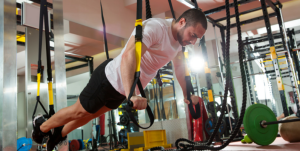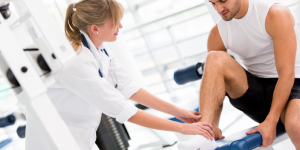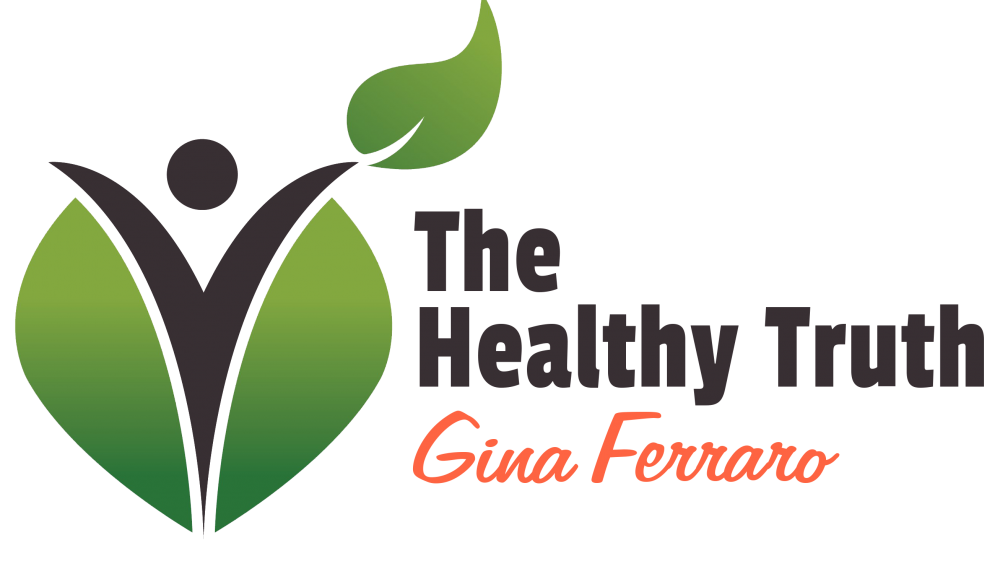by Gina Ferraro | Mar 9, 2015 | Exercise, Injury prevention, Wellness

When I look around my gym I am consistently surrounded by people who are performing advanced exercises BADLY! Most assume that they are more competent than they actually are, and instead of gradually progressing their exercises they just jump past the fundamentals and leave themselves open to increased injury risks. Just as most things, exercise technique is mastered in stages. We need to learn the basics to build the motor skills that form our foundation. If we skip these essential stages then our bodies are not as adequately prepared and cannot support us as well. It is like building a house directly on sand! Many exercisers are too impatient and want everything “yesterday” and don’t put in the hard work that is necessary. The result is overloading certain body structures and causing more forces than they are capable of handling. The body works best when it shares the load, and core muscles/stabilisers/neutralisers all need to work together with global muscles. Imbalances will cause postural shifts away from neutral, and this is the best recipe for injury and pain. I’m confident that you have all seen this – a person lifting a weight they should never be attempting right now, or someone performing an exercise with horrendous form. Exercise technique is a skill………and only perfect practice makes perfect execution.
What is sadder is that I also see personal trainers giving the wrong exercises to clients……when they need to be assessing their client’s current capabilities and not just their end goals. The phrase “just because you CAN, doesn’t mean you SHOULD” always comes to mind when I observe such behaviour.
Correct exercise progression is an important part of skill development. Please be aware that incorrect exercise technique doesn’t always cause immediate problems, but also longer term chronic conditions. Don’t just train for your short term desires. Understand they may cause you a lifetime of misery down the track.
Find a professional trainer who really knows what they are doing and base your exercises and progression in a manner that will show you not only the best gains aesthetically…….but also physiologically. If you can’t perform an exercise properly….then you shouldn’t be performing it at all. Be aware of your limitations and only progress when you have mastered the previous stage. Don’t let your ego dictate your exercise and weight choices! Take a step back and build up to it gradually. Yes….your body needs to be challenged in order for it to change but this is not what I am talking about. Challenge yourself within your capabilities and not above them. You will experience a longer and more capable training life this way.
by Gina Ferraro | May 13, 2014 | Exercise, Health, Injury prevention, Weight loss, Wellness

There are a few myths and misconceptions about sweating when exercising:
Myth #1. “If I sweat loads I will lose weight.”
Fact: Well yes I guess this is in PART true. But the weight you lose is water weight NOT fat weight, and will be replaced when you replace the necessary fluids during hydration!
Myth #2: “If I sweat excessively then that means I am unfit.”
Fact: Sweating is a way to thermoregulate (i.e. regulate your body temperature) and some people are more efficient at dissipating body heat than others, and this is NOT indicative of fitness levels.
When you exercise your body creates heat (when muscles contract the fibres slide over one another creating friction) and you have four methods to release this heat. Radiation, Convection, Conduction, and Evaporation. Now sweating comes under evaporation, but if it is actually dripping off you then it isn’t evaporating and therefore not really assisting you in cooling down. To help this along you will benefit from adding some convection (movement of air) via a fan as when airflow is added to a wet body it cools much faster than when it is added to a dry body.
Myth #3. “If you aren’t sweating whilst you exercise then you aren’t working hard enough”.
Fact: This is also incorrect. The explanation is the same as myth 2.
Your body loses as much as 1.5 litres of water a day and as much as that per hour during strenuous exercise in a hot environment.
As a general guideline, aim to drink around 8 cups or 2 litres/day (more if you exercise) and keep hydrated. However, this is just a guideline and each individual has different hydration requirements that will determine their specific intake.
Note: Fluid intake can also occur when consuming foods that contain water such as fruit and vegetables and this contributes to your required daily intake.
by Gina Ferraro | May 9, 2014 | Exercise, Health, Injury prevention, Wellness

We have ALL been there I am sure (I am STILL there). We finally get ourselves motivated to getting fitter and healthier then all of a sudden life thinks it is funny to put an obstacle in our way, and watches from the sidelines as we try to figure out how to get around it. I’m talking about injuries. Aaaargh! Frustrating!
Often injuries make great excuses to putting our health and fitness goals “on hold”. But what happens if our injuries are chronic and life-long? Do we just avoid health at ALL cost to accommodate? I hope not. I certainly don’t let it run MY life.
We need to stop focusing on what we CAN’T do, and find out what we CAN do. In other words, stop finding excuses and look for solutions. I am not suggesting that it is easy by any means, but it IS possible. I have worked with many clients who had debilitating injuries. Some could barely walk! But if we become sedentary as a result….we lose capabilities in OTHER areas (especially our muscles). Now these past clients were determined not to let their injuries rule their lives and many are now living more mobile lives and enjoy the associated benefits.
I myself prolapsed a lumbar disc in 2007. It and the linked neural sciatic pain were the WORST pain I have EVER experienced. I couldn’t walk without excruciating pain for almost a year. Admittedly though I DID let it take control of my life for another year afterward and if that continued, then I shudder to think of my condition today. It was hard but I got back into fitness – specifically my weight training. I had to change around my program and accommodate my injuries.
Chronic injuries will always be painful. Anyone who has them knows that there is rarely a pain-free day. BUT if we don’t keep our body’s strong that pain will escalate and other areas will become injured to compensate until we are completely unable to move anymore.
There are musculoskeletal specialists that can assist with injury management. General practitioner doctors are very limited in this area so there is little benefit going to see them (unless asking for a referral to a specialised musculoskeletal or orthopaedic doctor). You will need to research a credible and capable physiotherapist (who are regarded as GOD’S in my line of work) and even certain Chiropractors. Just like any occupation there are good and bad and you DO have to do your homework. Once you have been assessed and a rehab program is suggested…a specialised trainer such as an exercise physiologist would be best at assisting. (Please note that basic Personal Trainers are NOT qualified nor usually competent at dealing with injuries!)
The important thing is that all professionals need to be working as a TEAM and each person’s expertise needs to be respected by the other. This will ensure the best possible outcome for the poor injured patient.
by Gina Ferraro | Apr 24, 2014 | Exercise, Health, Injury prevention, Wellness

Warming up before exercise is the essential preparation needed to supplement the workout. A warm-up can be any physical activity that increases blood flow to working tissues, speed of nerve impulses to muscles, and delivery of oxygen and nutrients for energy release. This increase in blood flow also enhances the removal of waste products from muscle. Combined altogether, these changes prepare the body for vigorous exercise by enhancing the muscle’s metabolic properties and enhancing the mechanical efficiency of muscle contraction and force production.
Warming up is an imperative pre-exercise injury prevention component because it increases the elasticity of the muscle-tendon unit.
Contrariwise, the purpose of stretching is to increase the range of motion about a joint and group of joints. Pre-exercise stretching does NOT assist with injury prevention. It IS an extremely important part of fitness and crucial to include as part of a well-balanced exercise program BUT the timing of it should be reconsidered. You would be better off waiting until AFTER the workout is complete to conduct your stretching routine. Muscles are best stretched warm so this is an ideal time to also get the maximal stretching benefits.
Stretching after each vigorous workout also encourages mind and body relaxation.




